Welcome to summer on the Outer Banks. This is the time of year when our beaches are perfect, the ocean cool and refreshing and our maritime forests explode with color and sound. It’s also the time of year that some of our most colorful feathered friends settle in for a few months.
We can’t possibly include all of the summer birds of the Outer Banks, but we think we have a small list here of some of the most beautiful yet common seasonal visitors.
Northern Parula
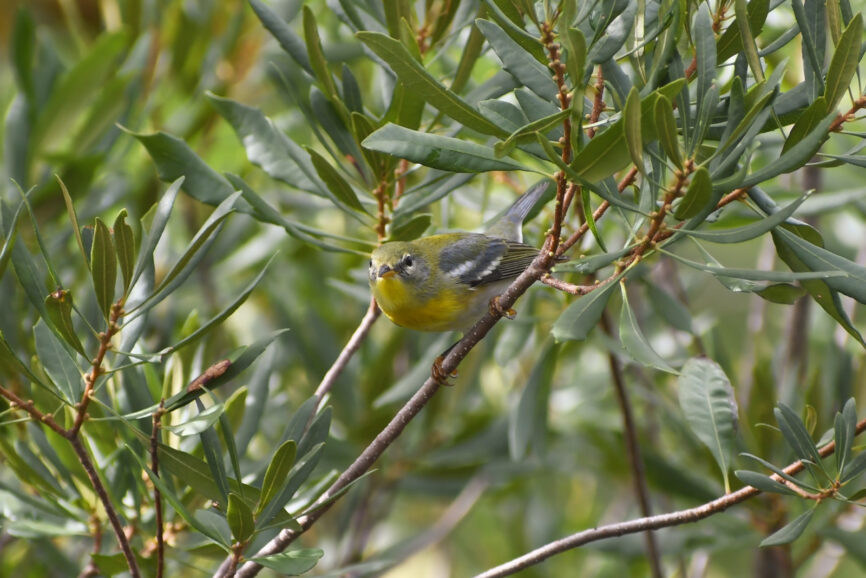
This is an active little bird that flits endlessly, it seems through the branches of the trees. A member of the Warbler family, the Northern Parula is quite colorful. The male is more colorful than the female, and given their appearance it would seem as though they should stand out in the foliage.
Not really, though. The summer foliage along the East Coast where they breed from spring into summer, actually has quite a number of the shades of yellow and gray found in their feathers.
The name comes from an earlier Latin name that never stuck—Parulidae, the Latin name for a family of chickadees and titmice. the Northern Parula, however, is not considered a part of that family of birds, placed instead with wood warblers.
It has had some different names. Audubon, as an example, called it the Blue Yellow-backed Warbler.
Northern Parulas prefer deciduous trees, so a pine forest is not the best place to look for them.
Indigo Bunting
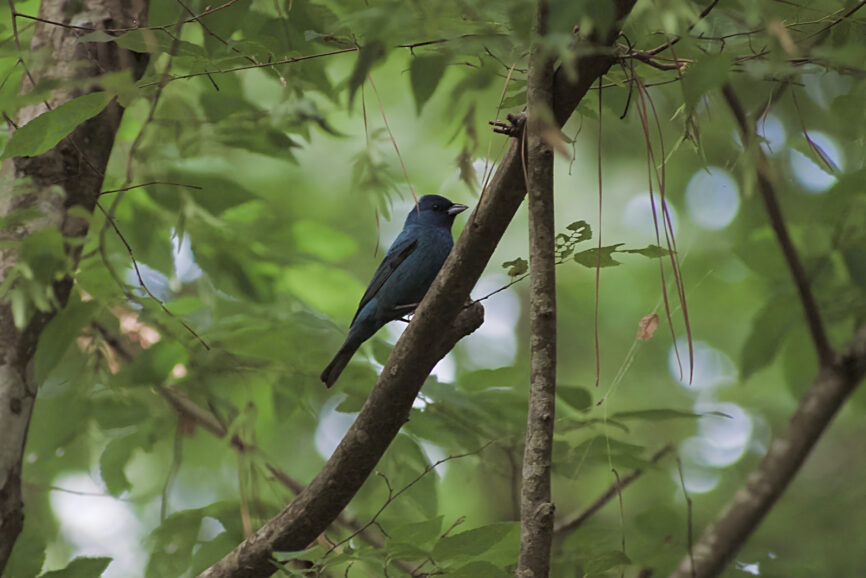
The male is the indigo-colored half of the species and seeing one in the forest is a real delight. One of their nicknames is “blue canary.” Seeing an Indigo Bunting and hearing him sing—it’s the male that makes all the noise—leaves no doubt this is a songbird.
Listen carefully and the song seems similar to the cry of a cardinal—which makes sense since it’s in the same family of birds.
If he’s singing, he’ll probably be perched as high as he can go to let the whole world hear what he has to say. Otherwise, they tend to be lower in the foliage, foraging for food.
Interesting fact…there is no blue pigment in their feathers. That beautiful, seemingly iridescent indigo, comes from microscopic structures in the feathers that refract and reflect blue light—kind of the same process that creates the blue sky.
The females are a very plain brown and studies of the species have led to the conclusion that they do most of the work of caring for the eggs and nest.
Great Crested Flycatcher
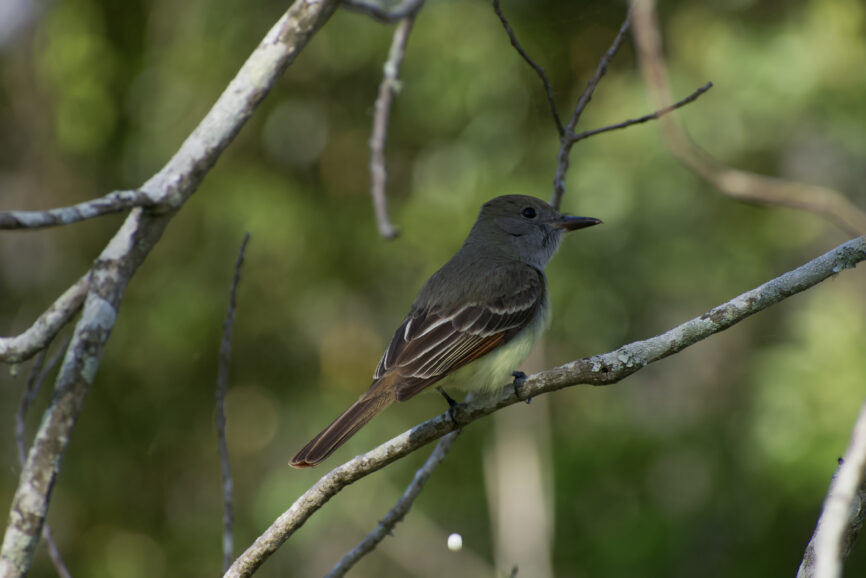
There’s not much of a crest to be seen in the Great Crested Flycatcher. Nonetheless, it’s a bird that’s fairly easy to identify. True to its name, it does eat insects, although it’s uncertain if flies are part of their diet. They tend toward larger insects.
They are considered a sit-and-wait predator, perching in trees, awaiting their prey to come along. When they see something they fly straight and fast toward it.
Although it is considered one of the more difficult birds to spot because it often roosts in dense foliage as it waits for its prey, by paying attention to the foliage, the Great Crested Flycatcher can often be seen.
An interesting fact about their nesting habits. They nest in holes in trees and consistently add pieces of shredded snakeskin to their nests.
Eastern Kingbird
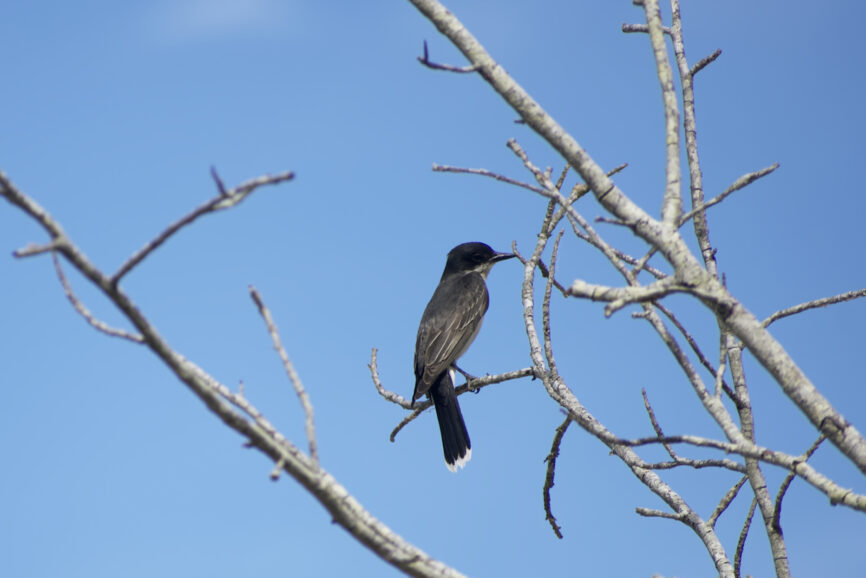
A powerful and fast flyer, the Eastern Kingbird can often be seen perched on a branch that gives a good overview of an area. They are especially prevalent on the Outer Banks at the edge of ponds and ditches if there is a place for them to perch nearby.
For that reason, they are fairly common at Sandy Run Park in Kitty Hawk, for example.
A lot of times the first hint an Eastern Kingbird is around is seeing one in flight. If they don’t immediately duck into dense foliage, look for their black head and white tail tip on a branch nearby.
They winter in South America where their diet changes from insects to berries.
Common Yellowthroat
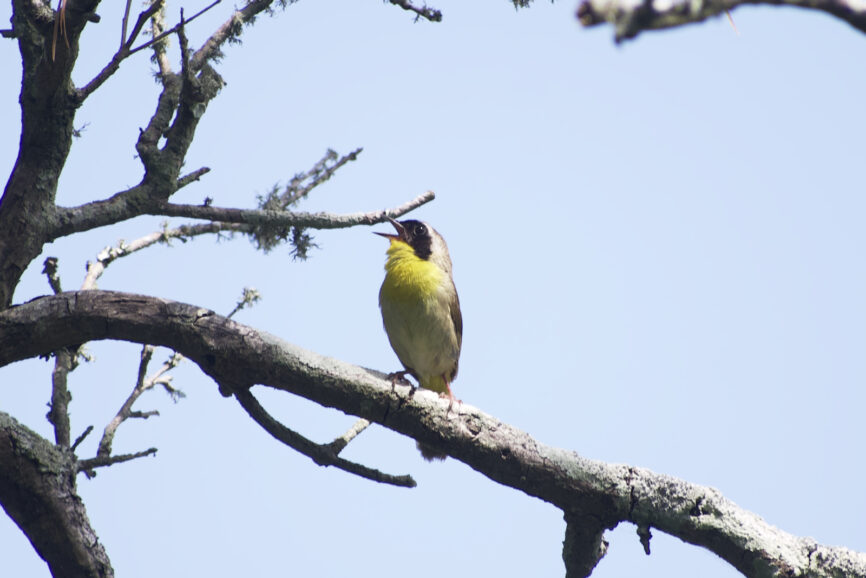
Colorful and vocal, the Common Yellowthroat is another member of the Warbler family that is so common on the Outer Banks. The females are not nearly as colorful, with considerably more brown in their feathers, although they will usually have some yellow at their throats.
They prefer a habitat of dense underbrush usually along marsh and wetlands, environments that seem perfect for the bird. Although considered common, they are tough to spot, mostly because they spend so much of their time in that dense underbrush.
For anyone who may have wondered if mating fidelity is part of bird life, here’s an interesting fact. During breeding season a male will vigorously defend the territory around the nest. But as he does so, the female will send out a mating call and mate with other males while the nest protector is out protecting his territory.
Prothonotary Warbler
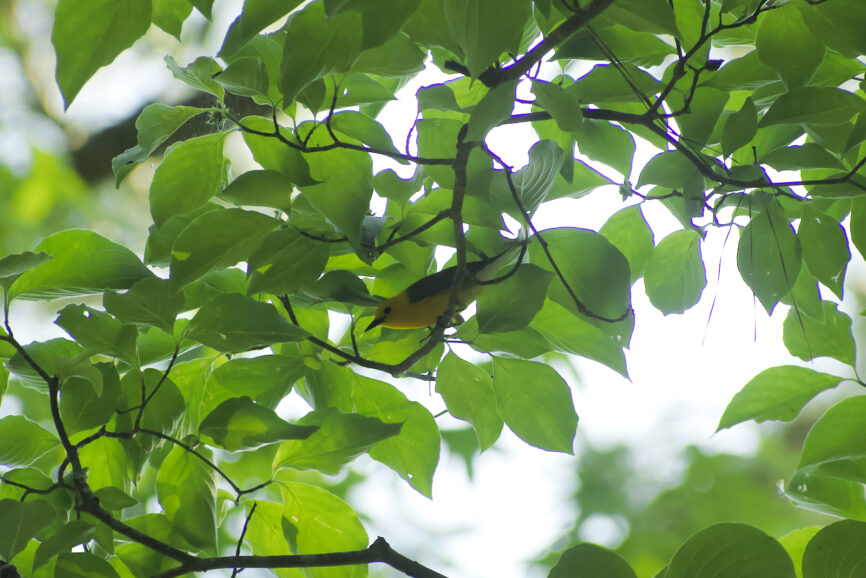
We can thank the Catholic Church for giving us the name for the Prothonotary Warbler. At one time the clerks in the Church were called prothonotaries and wore bright yellow robes—hence the name for this beautifully colored yellow bird.
The maritime forests of North and South America, with their abundant swamp, marsh, and wetlands, are essential habitats for this species. Because of that, it is estimated that during breeding season the two states support up to 22% of the world’s population of Prothonotary Warblers.
This is a fairly long-distance migrator, breeding in the eastern half of the United States, then wintering in Central and South America.
Worldwide there has been some concern about Prothonotary Warbler populations because of the loss of habitat. However, conservation efforts to protect existing habitats and to provide nesting homes seem to be stabilizing the world population, according to the Audubon Society.
